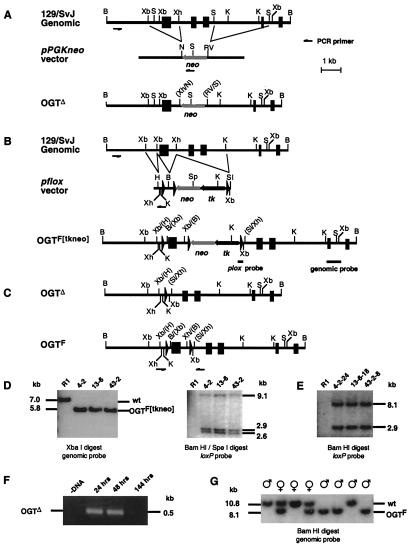Figure 1.
OGT mutagenesis in ES cells and mice. A mouse OGT genomic clone bearing five exons (filled boxes) was used to construct two types of gene-targeting vectors. (A) The first vector would be expected to produce a null mutation by deletion of two OGT exons with insertion of a neomycin phosphotransferase cistron (neo). (B) The second vector incorporates loxP sites that initially would generate the OGTF[tkneo] allele. (C) ES cells bearing the OGTF[tkneo] allele that are subjected to transient Cre expression should yield both OGTΔ (type I) and OGTF (type II) alleles. (D) Homologous recombinants were obtained with the loxP-containing vector shown in B and were characterized by Southern blotting with probes of OGT genomic (Left) or loxP (Right) sequences. (E) Only OGTF alleles are present among subclones, as represented, in over 200 analyzed specimens. (F) The OGTΔ allele is detectable by PCR in polyclonal ES cell extracts only at early times after Cre expression. (G) OGT alleles in offspring of chimeric male (♂) mice bred to C57BL/6 females (♀) were analyzed by Southern blotting. Female offspring are either homozygous wild type or heterozygous for the OGTF allele, whereas male offspring are either homozygous wild type or appear homozygous for the OGTF allele. wt, wild type.

